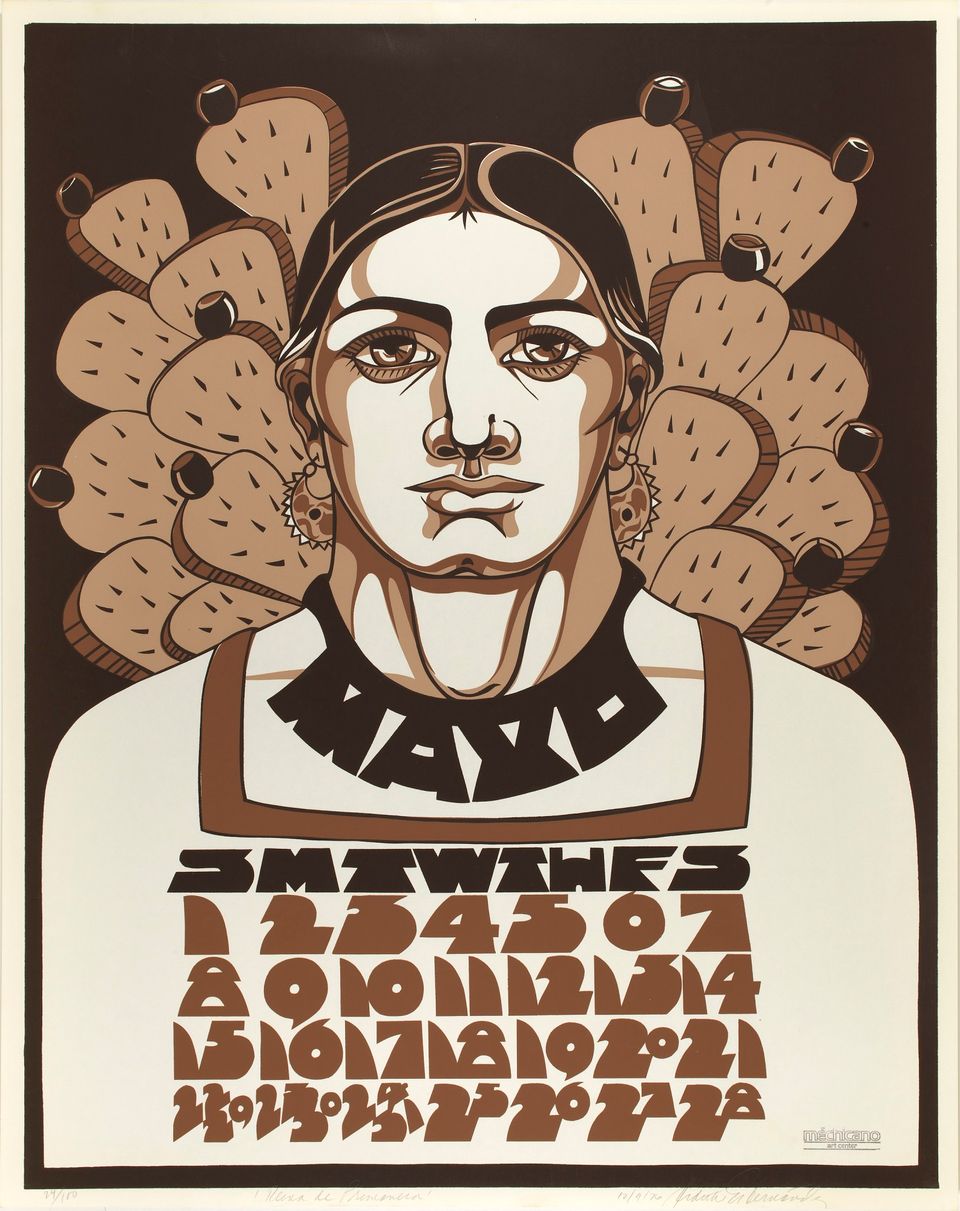
Judithe Hernández, Reina de la Primavera, from Méchicano 1977 Calendario, 1976, screenprint on paper, Smithsonian American Art Museum

Judithe Hernández, Reina de la Primavera, from Méchicano 1977 Calendario, 1976, screenprint on paper, Smithsonian American Art Museum
